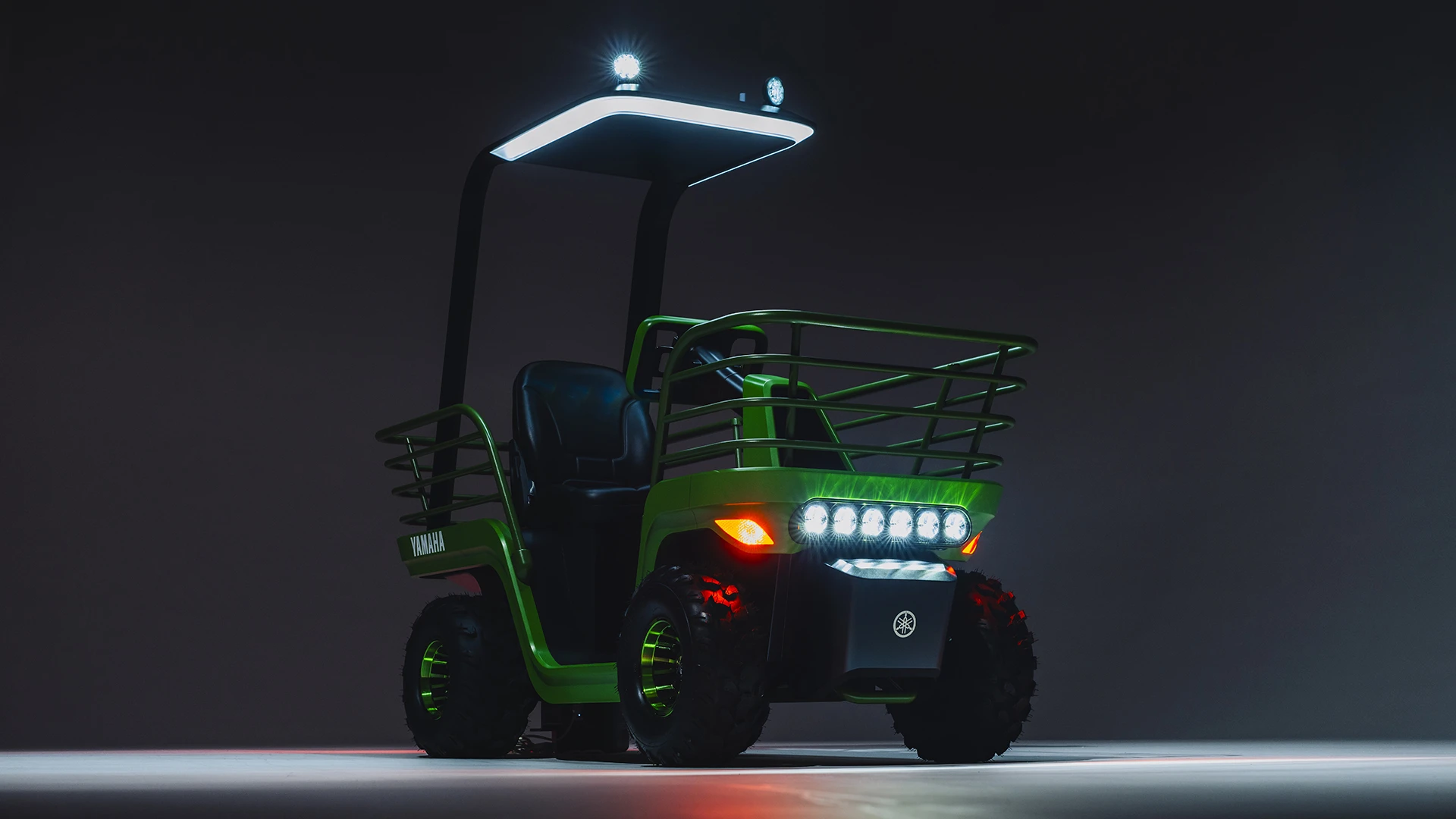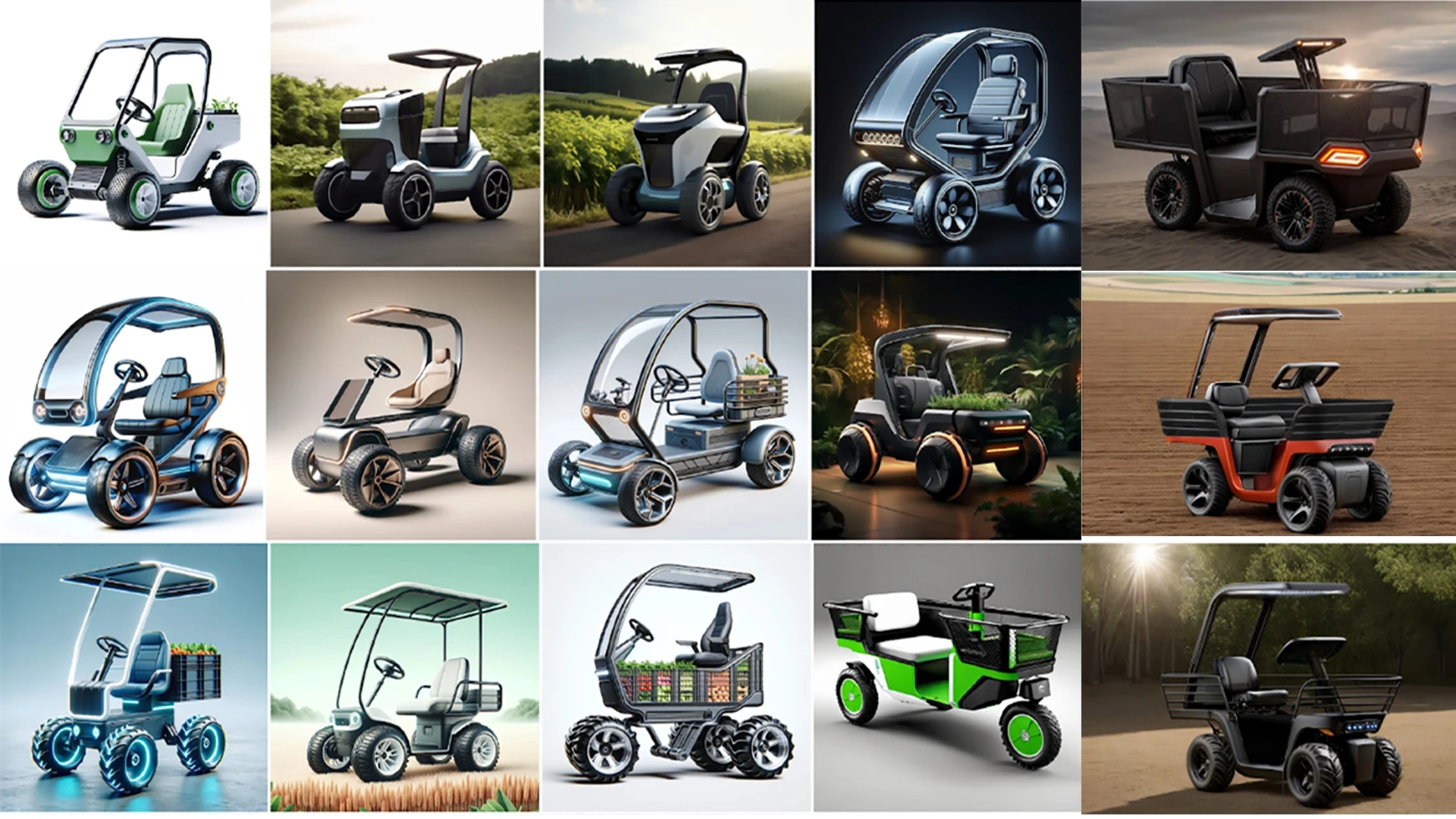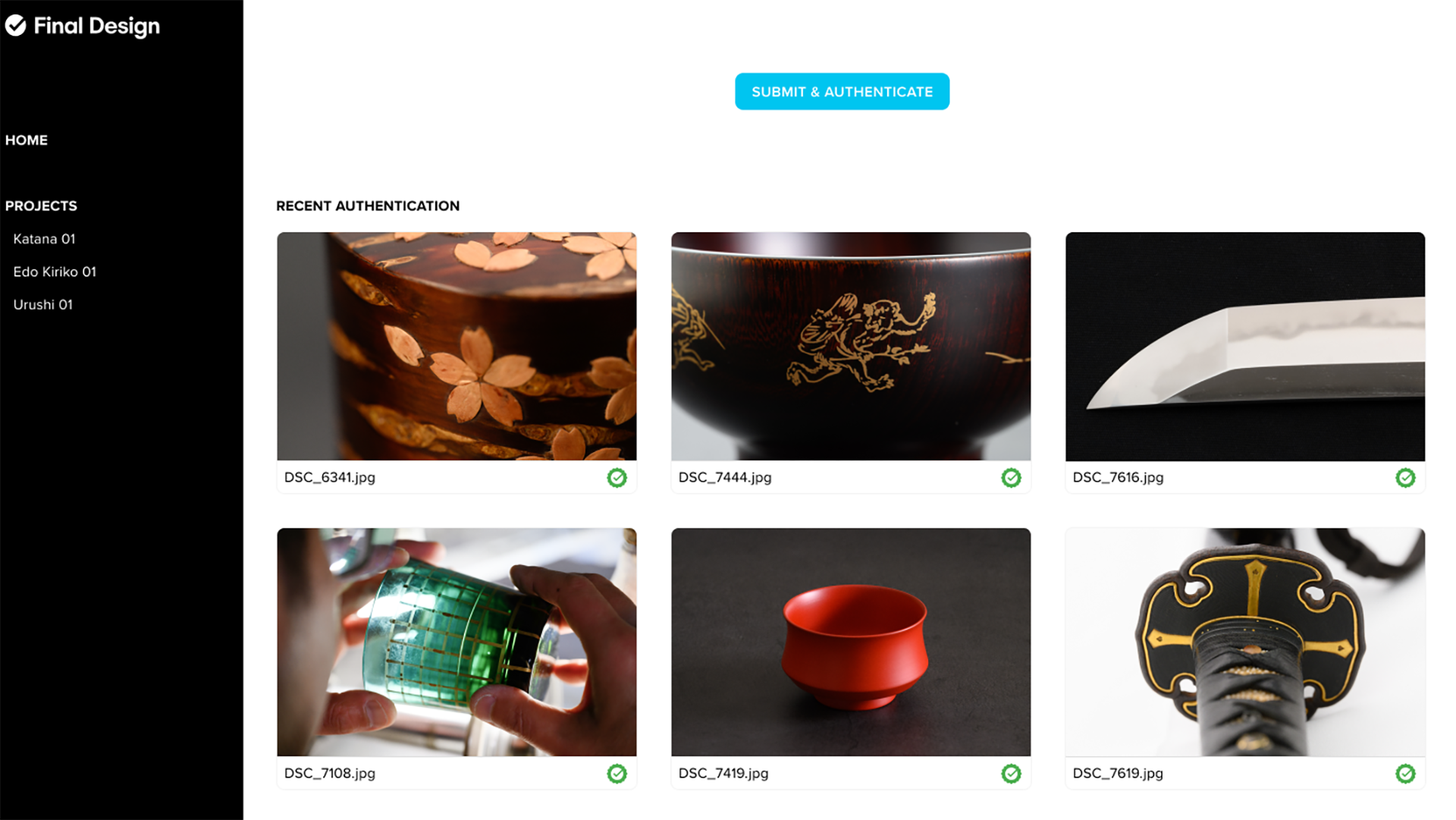& Construction

Integrated BIM tools, including Revit, AutoCAD, and Civil 3D
& Manufacturing

Professional CAD/CAM tools built on Inventor and AutoCAD
While generative AI, as typified by ChatGPT, has attracted a great deal of attention from companies, creators, and users for its capabilities, it has also created concerns regarding rights. Design and technology are increasingly inseparable, but can designers safely and creatively interact with generative AI?
The Concept 451, which made its debut at the Yamaha Motor booth at this year’s Tokyo Auto Salon, not only shows that it can but also embodies the technology’s potential. The prototype—based on the Yamaha Motor Platform Concept, a compact electric vehicle (EV) platform currently under development for low-speed personal mobility—features a unique shape specifically designed for light work in farmland and mountainous areas. Final Aim, a design and technology firm, extensively used generative AI from the conceptual stage, communicating and co-creating with Yamaha Motor.
He continued dialog with the AI to examine management strategy concepts; product strategies; and specifications such as various hardware requirements for EVs, which had previously been discussed internally by the manufacturer.
Final Aim Co-founder and Chief Design Officer Yasuhide Yokoi, also a designer of the Concept 451, says he began his process by interacting with various text-to-text generative AI tools to learn about the future of agriculture and the issues surrounding it and to understand its functional requirements.
“I asked the AI not only to propose a specific design like a sporty tractor but also to give me, a novice in the field of agriculture, a comprehensive explanation of the issues facing Japanese agriculture, including the aging of the farming population and business succession,” Yokoi says.
Functional requirements were then brought into the image-generating AI; Yokoi kept adjusting the prompts as the work progressed. “Some of its designs were too original at the beginning,” he says, but he also points out that some individual elements had features and ideas that would never have occurred to a human designer. “The experience of coming up with more than 2,000 ideas in just a couple of weeks and going through the same cycle of convergence and divergence that a designer would go through with a very high image quality was very interesting.”
The result was a unique, asymmetrical design that included six series of lights derived from the set requirements and a basket made of pipes that emphasizes the load-bearing nature of the vehicle. The project was also designed with practicality in mind. “The design doesn’t have front pillars to improve visibility and is also a shape that designers would have avoided in terms of physical structure,” Yokoi says. “But after simulating it, we decided to go with it for this project because we thought we could just barely get away with it.”
The 3D data was then created using Autodesk Fusion. During the design process, communication with Yamaha Motor took place almost daily. “Traditionally, hand-drawn sketches were used for communication in the early stages of design, and we could only add color and shade to them,” Yokoi says. “To reconcile the images, the communication between the client and the designer is especially crucial. I found generative AI to be a very useful tool for this purpose, as that allows us to share the design image at a very high level.”
Aside from supporting the design itself, Final Aim also promotes the introduction of blockchain and smart contracts into the design and manufacturing industry. The company is developing Final Design, a platform that centrally manages important data such as design data, contracts, and intellectual property information on a blockchain and ensures the authenticity of that data.
Yamaha Motor became an early user in the co-creation of the Concept 451. The management of final design, manufacturing data, and design contracts can become extremely complicated in the field of manufacturing, and the loss of those data would be a major problem. According to Yokoi, Final Design uses blockchain technology to centralize and manage this data.
Final Aim is receiving inquiries about copyright issues with using generative AI in design. According to the Japanese Government’s Agency for Cultural Affairs, “If an AI is recognized as a tool used by a person to express his/her thoughts and feelings creatively, it is considered a copyrighted work, and the AI user is considered as its author.” Final Design uses blockchain technology to ensure the authenticity of the design and prevent tampering.
Final Design is getting attention as a platform, from the manufacturing industry and from companies that handle design data in general, including the construction industry. “When design data assets are handed over to subcontractors or vendors, problems may arise, such as unauthorized copying or loss of the ability to trace authentic data,” Yokoi says. “We are also frequently asked about how blockchain technology can be used to address such issues, as well as how to ensure authenticity in architectural design using generative AI.” Final Design integrates Autodesk Platform Services to equip a 3D data-viewer function for design.
Yokoi appreciates Yamaha Motor’s open and flexible approach to the Concept 451 project, which was a big help in the collaboration using generative AI. “I think we are in an era where designers must be interested in various things, such as finance if they are dealing with blockchain, cryptographic assets, and databases, and intellectual property if they are dealing with generative AI.
“As technology has made it easier to create something, it is now very important to have the discernment to evaluate it,” Yokoi says. “While the new knowledge and skills required will only increase, our final aim is very simple. It is a world in which designers, engineers, and others who come up with ideas are rewarded; the spotlight is on them; they have value; and their work is recorded in a way that cannot be tampered with.”
Yasuo Matsunaka is a keyboard player, space-movie devotee, editor of Design & Make with Autodesk Japan, and international content manager for APAC and Japan at Autodesk.
Emerging Tech
PD&M
Courtesy of e.GO Mobile AG
D&M







